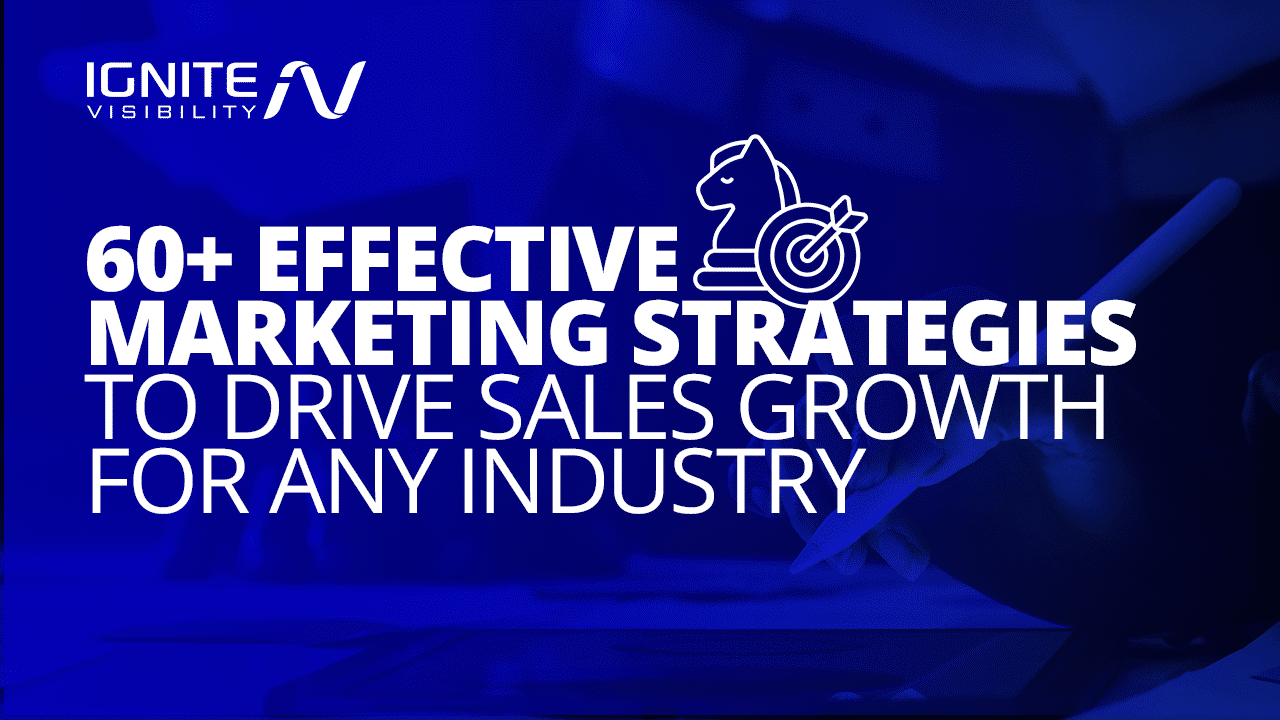
Effective marketing strategies are the lifeblood of your brand’s success. With so many options available, it’s crucial to explore new avenues and experiment often.
In this article, we’ll break down all the effective marketing strategies for email, social media, paid media, SEO, CRO, and creative design that can revolutionize your business.
What You’ll Learn:
- Simple Yet Effective Tactics for Email Marketing Success
- Proven Marketing Strategies for Social Media
- Refining Your Marketing and Sales Strategy for Paid Media
- Strategic SEO Marketing Approaches
- Effective Marketing Strategies for Conversion Rate Optimization (CRO)
- Marketing Techniques to Increase Sales for Creative Design
- FAQs: Are These Effective Marketing Strategies for Everyone?
Effective Email Marketing Strategies
Our Email Marketing Director, Emily Keye says, “I’ve seen how a strategic email campaign can transform brand outreach. Key elements include personalization, segmentation, and innovation. Regularly update your segmentation strategy to keep your campaigns fresh and engaging. Regularly review your segmentation strategy. Audience preferences evolve, and staying attuned to these shifts ensures your email campaigns remain relevant and impactful.”
1. Personalize the “From” Line: Build trust and credibility, especially crucial in fields like healthcare, by personalizing the From line to align with names.
2. Segment Your Lists: Tailor campaigns based on the wealth of data that is at your fingertips. The more relevant the overall content and the more precise the timing, the higher the results! For a sportswear brand, directing campaigns specifically to “fitness enthusiasts” ensures content resonates, boosting open rates and conversion.

Effective Marketing Strategy – Email Segmentation
3. Continuous Testing: Constantly test to refine your strategy and optimize your email program. Make data-based decisions and maintain a competitive advantage. Tech companies, for instance, can experiment with different product images or CTAs.
4. Leverage the Power of Visuals: Imagine a travel client showcasing picturesque destinations seamlessly across devices. Visual appeal enhances engagement, and in a world captivated by visuals, this is a non-negotiable marketing asset as the majority of engagement is happening on smaller devices.
5. Harness Social Proof. For an ecommerce client, weaving customer empower reviews, testimonials, and case studies throughout the email instills confidence and fosters a level of trust, and we all “care” about what others are saying.
6. Timing Matters: Timing is an often overlooked yet critical factor that ensures your message doesn’t get lost. Lean into the power of AI – most email service providers have Send Time Optimization tools to help you get the right message, to the right people, on the day of the week and at a time that works for each unique audience.
7. HTML Responsive Design: Use visually appealing HTML responsive templates to communicate your message. In the age of varied screens, responsive design is a game-changer. For a retail client, showcasing products in visually appealing layouts adaptable to different devices is the way to go.
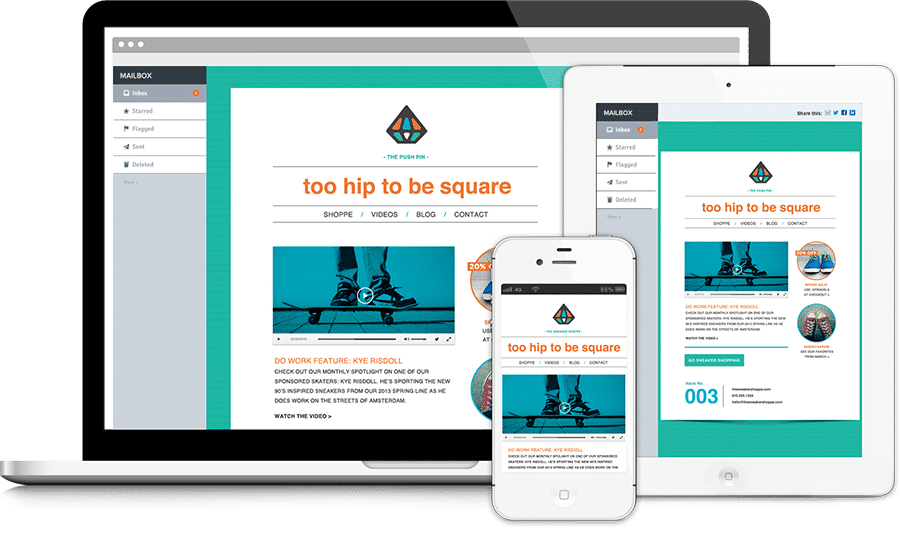
Example of a Responsive Email
8. Compelling CTAs: Rather than leave readers guessing what to do, the best email CTAs ensure conversions by guiding them toward targeted goals. Don’t go overboard – studies show that 2-3 CTAs will produce the highest click rates.
9. Easy Unsubscribe and Opt-in: Ask for email opt-in permission, make it easy to unsubscribe, and send relevant content that your audience engages with all the time!
Effective Marketing Strategies for Social Media
If you want your marketing tactics to increase sales, navigating the nuances of each platform is vital. Our Senior Director of Social Media Carl Bivona says, “I’ve witnessed the transformative power of strategic social media engagement in building brand awareness, fostering community, and driving measurable business results. Consistency is key across all effective marketing strategies. Develop a social media content calendar, ensuring a regular cadence of engaging posts aligned with your brand’s voice and objectives.”
10. Thought Leadership: Being recognized as a thought leader can significantly elevate your brand. Share unique insights on social media, like a tech client discussing the latest developments, to attract followers seeking industry knowledge.
11. Gated Content Leverage: Leverage gated content to expand your reach. For instance, a fitness brand can offer exclusive workout guides accessible only through an Instagram DM.
12. Strategic Advertising: Invest in highly targeted social media ads tailored to each market segment. Consider a fashion brand promoting different collections on Facebook to B2C customers, optimizing engagement and minimizing costs.
13. Humanize Your Brand: Beyond products or services, people connect with stories. A chef, for instance, can share their favorite recipe or a behind-the-scenes look into the kitchen.
14. Customer Service via Social Media: Social media serves as a public platform for customer questions and complaints. Many successful brands, like airlines, have dedicated staff managing customer interactions on social media.
15. Error-Free Engagement: Attention to detail in communication is one of the top marketing techniques to increase sales and reflects on your brand’s professionalism. Proofread posts to prevent grammatical errors, ensuring a polished image.
16. Optimize YouTube for Search: YouTube functions as both a social media site and a search engine. Incorporate keywords in titles, descriptions, and tags. Consider a travel agency, optimizing videos with destination-specific keywords to enhance discoverability for potential travelers.
17. Short Form Video Focus: A food delivery service can create engaging content for platforms like Instagram Reels, capturing attention with quick, entertaining clips that resonate with the audience’s preferences.
18. Embrace Hashtags: Incorporate the influential strategy of hashtags to increase discoverability and engagement. Initiate a branded hashtag campaign; for instance, a beauty brand can encourage users to share their makeup looks using a unique hashtag, fostering a sense of community.
19. Trending Sounds or Videos: To stay relevant, integrate trending sounds or videos in your content. An entertainment brand can capitalize on popular memes or challenges, creating content that aligns with current trends and resonates with the audience.
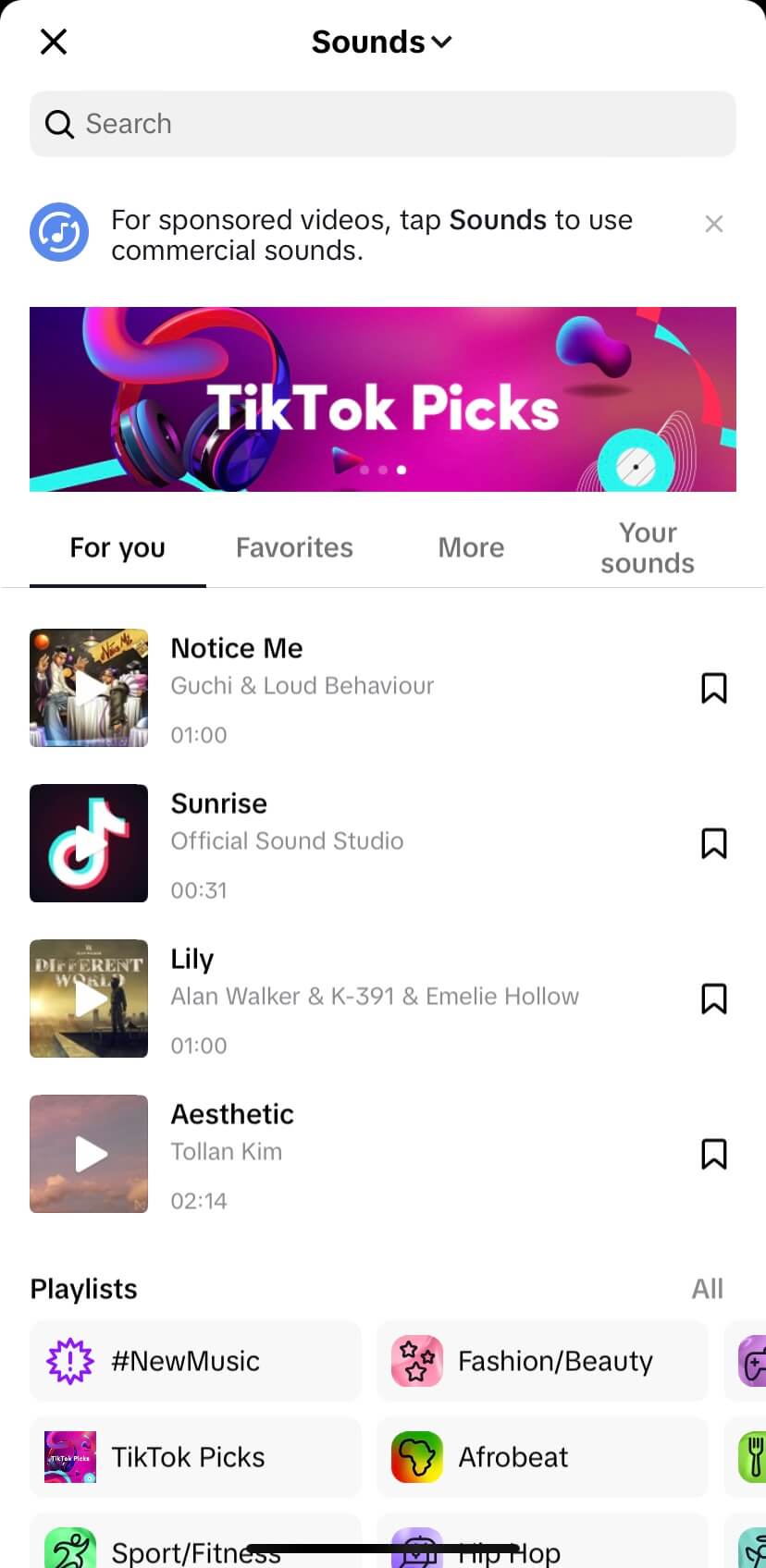
Trending Sounds – TikTok Marketing
20. Audience Engagement Tactics: Encourage audience interaction through polls, quizzes, and Q&A sessions. An education platform can use these features to involve students, creating a sense of community and active participation.
Effective Marketing Strategies for Paid Media
Our Senior Director of Paid Media Meghan Parsons says, “I’m suggesting companies regularly host knowledge-sharing sessions, encouraging team members to stay on top of industry updates, emerging trends, and the latest advancements in tools like GA4. This proactive approach positions us not just as pioneers who can develop cutting-edge marketing strategies to increase sales.”
21. Strategically Time Ads: Running ads during peak appointment booking hours in industries like healthcare, significantly improves the chances of capturing potential patients actively seeking medical services. Dive into analytics to unveil these optimal periods.
22. Optimize Display URLs: Ensure your URLs are not just efficient but memorable, seamlessly aligning with your brand. For instance, in property ads, a concise and compelling URL can significantly boost click-through rates.
23. Leverage Remarketing Opportunities: Platforms like Facebook offer dynamic remarketing options that allow us to re-engage potential buyers with personalized product displays. Regularly analyze the performance of your remarketing efforts through GA4 to stay ahead of shifting consumer behaviors and ensure a dynamic approach to reconnecting with your audience.
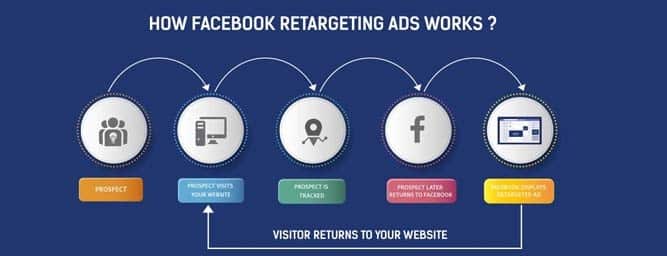
Facebook Retargeting Process
24. Utilize Negative Keywords Wisely: Dive into comprehensive analytics to identify and eliminate non-converting keywords. For travel-related campaigns, this strategy is particularly crucial to attract genuinely interested vacation planners.
25. Refine Match Types: The automotive industry demands precision in targeting. Opt for Exact Match over Broad Match in Google AdWords to attract highly qualified leads, avoiding wasted budget on uninterested audiences.
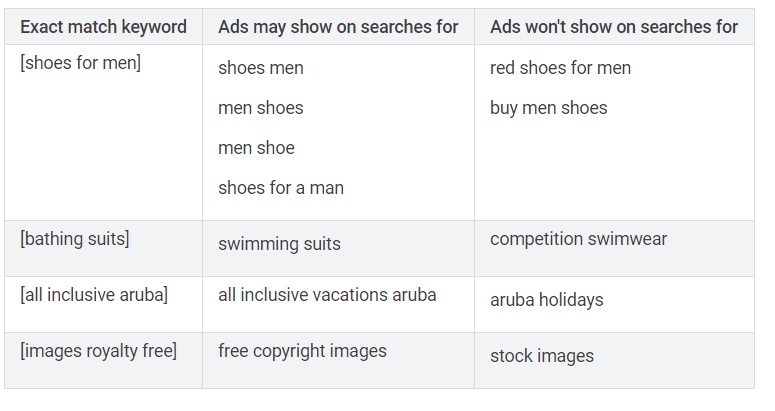
Paid Media: Examples of exact match keywords in Google AdWords
26. Unearth Long-Tail Keywords: In the crowded landscape of PPC advertising, fashion brands can stand out by uncovering unique long-tail keywords. While these may not generate massive traffic, they often lead to higher conversion rates.
27. Competitive Keyword Tactics: Tech-savvy industries can gain invaluable insights by emulating successful competitors’ keyword strategies. Tools like SEMRush provide a glimpse into their ad campaigns, allowing us to target the same keywords.
28. Maximize AdWords Extensions: Legal services can elevate their customer outreach game by incorporating call and message extensions into digital ads. Simplifying communication for potential clients, especially on mobile platforms, can be the deciding factor in their choice.
Effective Marketing Strategies for SEO
Our VP of SEO, Jen Cornwell says, “I’ve learned that diversifying your SEO plan is paramount in establishing your brand’s authority and gaining organic clicks. While paid media might garner immediate results, a well-rounded SEO approach takes time. Foster a culture of continuous improvement within your SEO team. Regularly conduct workshops, encourage skill-building initiatives, and stay attuned to emerging trends.”
29. Avoid Black-Hat Techniques: In the legal sector, trust is essential. Steer clear of dubious promises and manipulative tactics. Instead, focus on authentic content creation and ethical link-building to secure long-term SEO success.
30. Track Your Keywords: Utilize tools like SERPBook to monitor keyword performance. Understand your standing in SERPs to refine product descriptions and enhance visibility in the ever-evolving ecommerce landscape.
31. Don’t Forget About the “Other” Search Engine: While Google dominates, travelers often turn to Bing for alternative search experiences. Optimize for Bing by leveraging Bing Webmaster Tools.
32. Create a Sitemap: In the tech industry, streamline search engine indexing by creating a comprehensive sitemap. Whether you’re a startup or an established player, using tools like Yoast in WordPress ensures your technological offerings are effectively showcased to search engines.
33. Guest Post: Health and wellness blogs can flourish through strategic guest posting. Collaborate with non-competing blogs, offering valuable content that includes backlinks to your site.
34. Target Long-Tail Keywords: In the competitive real estate market, target long-tail keywords to capture niche markets. Optimize content for specific property types or unique offerings.
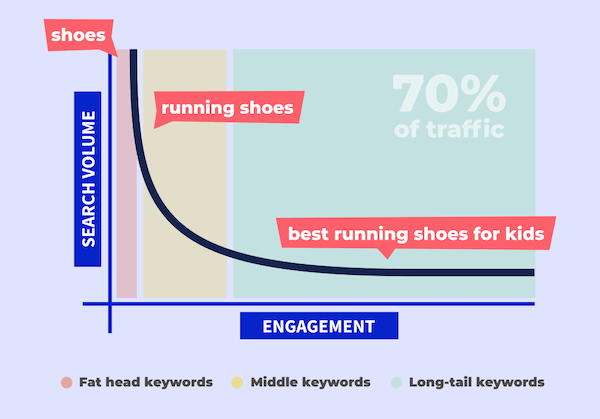
Example of Long Tail Keywords
35. Optimize for User Experience: Educational websites thrive on user experience. Ensure your site provides a seamless journey for students and educators alike. Optimize font sizes for readability, deliver promised content, and create an intuitive navigation structure for an exceptional user experience.
36. Use Long-form Content: In the food and beverage industry, captivate audiences with immersive long-form content. Share detailed recipes, culinary stories, and engaging content that not only satiates the reader’s appetite but also enhances your SEO ranking through valuable, lengthy content.
37. Speed Up Your Site: For ecommerce platforms, a swift user experience is synonymous with customer satisfaction. Regularly assess your site’s speed, utilizing PageSpeed Insights, and collaborate with your development team to ensure optimal performance.
38. Create Helpful Content: Technology consumers seek informative content. Develop guides, tutorials, and troubleshooting articles that address common issues. Establish your brand as a tech authority by providing solutions and fostering a loyal user base.
39. Optimize for Local SEO: Ensure your healthcare practice’s online presence is optimized for local searches. Utilize Google My Business, encourage customer reviews, and feature local events or partnerships to boost your visibility within the community.
40. Address Technical Issues: In the finance sector, technical precision is non-negotiable. Regularly audit and address technical issues on your website, ensuring secure transactions, data privacy, and a seamless user experience.
Effective Marketing Strategies for Conversion Rate Optimization (CRO)
Our Director of CRO, Randy Anderson says, “I’ve witnessed the transformative power of strategic optimization. It’s not just about getting visitors; it’s about ensuring they convert. Regularly conduct A/B testing on your landing pages. Analyze user interactions, monitor conversion rates, and refine elements based on data insights. This iterative approach ensures continuous optimization and keeps your conversion strategies aligned with evolving user preferences and industry trends.”
41. Add Content Above the Fold: Eliminate unnecessary elements and place enticing visuals, ensuring visitors immediately engage with your product offerings without the need for excessive scrolling.
42. Create Clear Calls to Action: Utilize prominent buttons for appointment scheduling or product purchases. Heatmaps reveal where user attention lingers—place calls to action strategically in these hotspots to guide visitors seamlessly toward conversion.
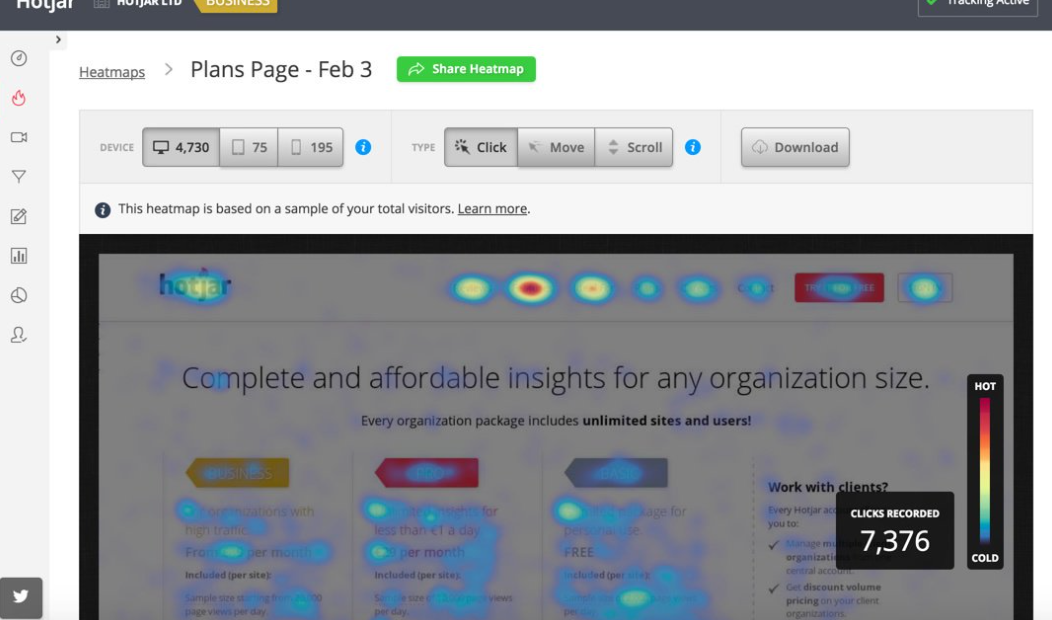
Hotjar Heatmap Analysis
433. Optimize Your Checkout Process: If you’re in the finance sector, be sure to streamline the checkout process to minimize steps, focusing solely on necessary information. Reducing friction at this crucial stage minimizes cart abandonment.
44. Use Trust Symbols: Trust is paramount in the legal realm. Incorporate security logos, Better Business Bureau endorsements, and client testimonials on your landing page. Reassure potential clients that your legal services have a proven track record, instilling a sense of trust.
45. Copy Competitors: In the travel industry, where competition is fierce, don’t shy away from mimicking successful strategies. Analyze competitors’ landing pages to identify effective elements and emulate the copy and design that resonates.
46. Use a Simplistic Design: This is a particularly important sales and marketing strategy, especially if you’re in the tech space. A clean, professional design ensures quick loading, enabling visitors to focus on your tech solutions.
47. Support All Devices: In the real estate sector, a mobile-friendly experience is non-negotiable. Optimize landing pages for smartphones and tablets to cater to potential homebuyers on the go.
48. Use Videos: Leverage the visual appeal of video to captivate visitors, especially those with shorter attention spans, ultimately boosting conversions.
49. Use Dedicated Landing Pages: In the home improvement sector, diverse offerings merit multiple landing pages highlighting a specific service or product, catering to varied customer needs.
50. Implement Personalization: In the fashion industry, personalize the user experience by recommending products based on individual preferences. Leverage data insights to create tailored recommendations.
51. Utilize Social Proof: For businesses in the hospitality industry, leverage social proof effectively. Showcase positive customer testimonials, ratings, and user-generated content to build trust and credibility.
Effective Marketing Strategies to Increase Sales for Creative Design
Our Chief Creative Officer, Oscar Lutteroth, says, “There’s no downplaying the pivotal role creative design plays in capturing attention. It’s ultimately about crafting an immersive experience, ensuring your brand resonates visually and engages audiences effectively. Invest in design collaboration tools to streamline communication within your creative team. Platforms like Figma or Adobe Creative Cloud facilitate real-time collaboration, ensuring seamless coordination and efficient execution of creative projects.”
52. Interactive Infographics: Illustrate intricate processes or product features and enhance user understanding through dynamic interactive infographics.
53. Branded Cinemagraphs: Capture the sizzling movement of a grill or the pouring of a refreshing beverage. These subtle, looped animations add a dynamic touch to your food and beverage offerings, enticing viewers with a sensory experience.
54. Illustrated Process Guides: Simplify real estate processes with illustrated guides. Whether it’s a step-by-step guide to home-buying or an infographic on property investment, use creative illustrations to grab your audience’s attention.
55. Custom Emoji Design: Personalize your ecommerce communication with custom emojis. Create branded emojis that resonate with your product line.
56. Augmented Reality (AR) Product Previews: Enhance the online shopping journey by providing a realistic preview of how your home goods and products fit and look directly in customer’s homes.

AR Product Preview
57. Visual Mood Boards: Inspire home improvement enthusiasts with visual mood boards. Curate images that represent various design styles, color schemes, and textures.
58. Interactive Packaging Design: Transform product packaging into a fun interactive experience. Use augmented reality on packaging to provide additional information, such as workout routines or nutritional tips.
59. User-Generated Content Collages: Humanize financial services with user-generated content collages. Feature customer testimonials, success stories, or financial goals achieved in a visually appealing collage.
60. Animated Case Studies: Present legal case studies in an animated format. Use dynamic visuals and storytelling techniques to convey complex legal scenarios.
61. Clear Branding: Don’t stray from the basics. Stay true to your brand colors, fonts, etc. to maintain a strong brand identity and presence around the web.
Frequently Asked Questions About Effective Marketing Strategies
1. Can small businesses implement these marketing strategies effectively on a limited budget?
Small businesses can tailor and prioritize these strategies based on their budget constraints, focusing on cost-effective initiatives that align with their specific goals and target audience.
2. How do you measure the success of a marketing and sales strategy?
Success is measured through KPIs such as conversion rates, customer acquisition cost, and engagement metrics, providing tangible insights into the effectiveness of the implemented strategy.
3. How often should marketing strategies be reviewed and updated?
Regular reviews, typically quarterly, ensure strategies stay aligned with evolving market trends and business goals, allowing for timely adjustments and enhancements.
4. What are some common mistakes to avoid in marketing strategy planning?
Avoiding vague objectives, neglecting target audience insights, and failing to track and analyze data are common pitfalls.
5. How can content marketing be effectively integrated into overall marketing strategies?
Content marketing should align with overall brand messaging and goals, creating valuable, relevant content that resonates with the target audience across various channels and stages of the customer journey.
Integrating Effective Marketing Strategies for Sales Success
Whether you aim to fortify customer connections, automate marketing endeavors, or enhance your online reviews, Ignite Visibility has you covered.
Discover how Ignite Visibility can empower your business by:
- Implement effective marketing strategies to increase sales
- Nurturing your customer relationships with customized email marketing
- Grow your social media presence and engagement
- Building a customized pay-per-click strategy
- Diving deep into your SEO keyword research
- Audit your desktop and mobile experiences to increase conversions
- Revamp your brand with our creative design services
- And more!
Get started today with Ignite Visibility! Reach out for a free consultation or request a proposal now.
